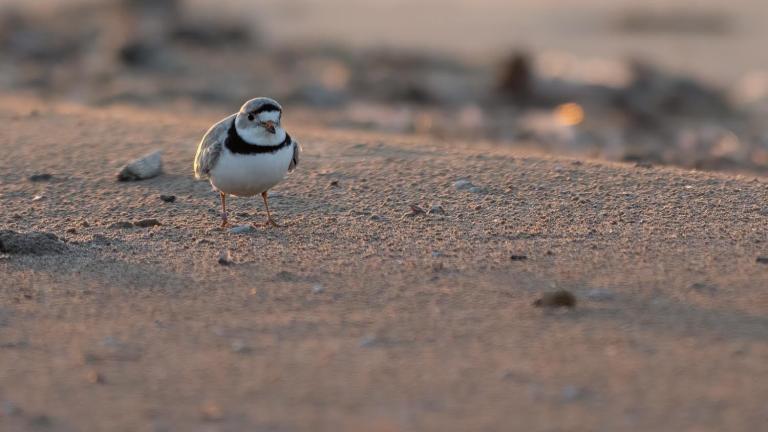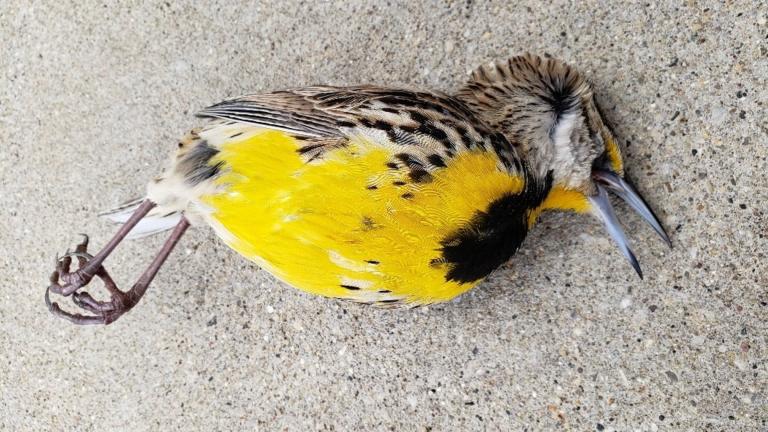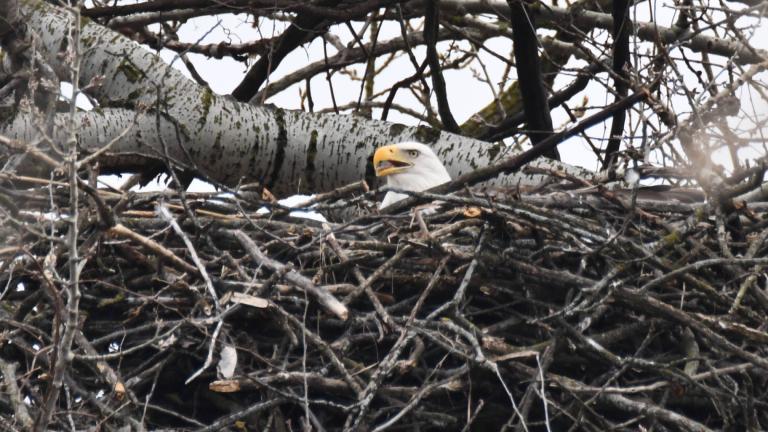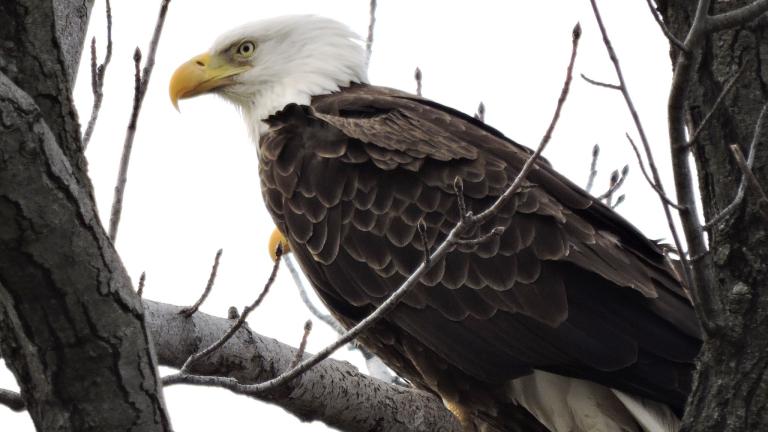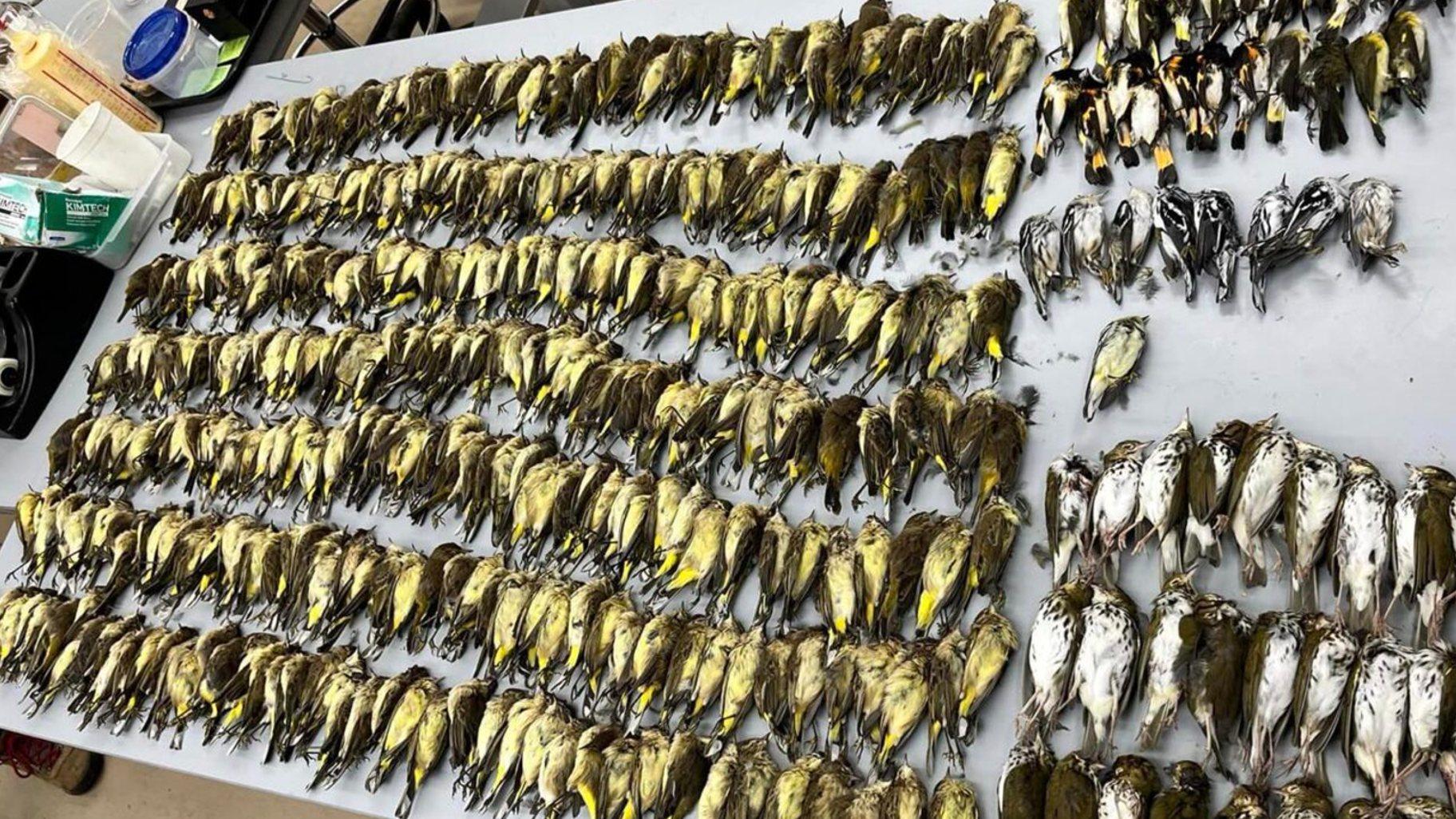 Some of the birds gathered by the Field Museum that were killed in October 2023 after colliding with McCormick Place Lakeside Center. (Courtesy of Taylor Hains)
Some of the birds gathered by the Field Museum that were killed in October 2023 after colliding with McCormick Place Lakeside Center. (Courtesy of Taylor Hains)
In mid-April, the Chicago Department of Planning and Development is set to release an update to the city’s sustainable development policy — the first in seven years — and what may or may not be included in the document is already creating controversy.
Having been informed of the policy’s contents in advance of the release, Bird Friendly Chicago — a coalition that includes the Chicago Bird Alliance, Chicago Ornithological Society, Chicago Bird Collision Monitors and Feminist Bird Club Chicago — is furious that no element of bird-friendly design will be compulsory.
For the new policy to stop short of making bird-friendly design mandatory is beyond disappointing, “it’s enraging,” said Judy Pollock, president of Chicago Bird Alliance (formerly Chicago Audubon Society).
Bird Friendly Chicago is calling on supporters to flood Mayor Brandon Johnson’s office with the demand to make at least some aspect of bird-friendly building design obligatory, rather than merely optional, for developments.
“There are thousands of preventable (bird) deaths every year. There’s no excuse for it,” said Pollock. “People don’t want their city to be the No. 1 most dangerous for birds.”
Multiple factors have earned Chicago that very designation, including its location along a major migratory bird flyway; its bright lights and tall buildings, typically constructed of glass, which can disorient birds and lead to collisions; and a lakefront with loads of attractive habitat that lures birds close to deadly structures.
Last October, a global audience was horrified by images of 1,000 birds killed in collisions with McCormick Place’s Lakeside Center during a single day of fall migration. The death toll was so striking that it was referenced in a recently released United Nations report on the deteriorating status of migratory species.
It was precisely that sort of scenario Bird Friendly Chicago aimed to avoid when it first began to push for a bird-friendly design ordinance back in 2016. Lack of support from then Mayor Rahm Emanuel and his successor, Mayor Lori Lightfoot, led to the group’s acceptance of a compromise: shifting bird-friendly design from the legislative branch to the administrative.
The Department of Planning and Development was instructed by an ordinance in 2020 to give bird-friendly design options greater weight within the sustainable development policy, with the intention of thereby increasing the likelihood developers would incorporate them into their plans.
During the years it’s taken to hash out changes to the policy, an untold number of birds have been killed or injured during migration season and numerous new buildings have been built or approved without any bird-friendly guidelines in place, ensuring “future loss of avian life,” said Annette Prince, director of Chicago Bird Collision Monitors.
 McCormick Place Lakeside Center's walls of glass and location on the lakefront are a deadly combination for birds. (Patty Wetli / WTTW News)
McCormick Place Lakeside Center's walls of glass and location on the lakefront are a deadly combination for birds. (Patty Wetli / WTTW News)
Peter Strazzabosco, deputy commissioner of the Department of Planning and Development, countered that the department has complied with the directive of the 2020 ordinance.
Here’s how the policy works: Developers have a menu of sustainable building options to choose from to achieve a set number of required points — 100 points for new construction projects, and 50 or 20 points for rehabs, depending on the scope of the renovation.
The current policy provides 5 points for a basic bird-friendly design and 10 points for enhanced bird-friendly design. The update will, per the 2020 ordinance, give greater weight and priority to the bird-protection section, Strazzabosco said.
“I can’t tell you everything that (the updated policy) says right now because it’s still being studied along with all the other sections. But generally ... it will more specifically identify bird-friendly material selections and high-risk building conditions,” Strazzabosco said. “It will also include best practice requirements involving other relevant bird hazards involving lighting, ventilation and other features.”
When the policy is released in April, there will be opportunity for feedback from “all the different advocacy groups that exist for different portions of this policy,” Strazzabosco said, though he couldn’t provide specifics on what form public engagement would take.
While proponents of bird-friendly design may be among the most vocal in pushing for changes to the policy, they aren’t the only stakeholders with a vested interest in the updated sustainable building guidelines.
Where the 2017 policy was largely developed internally by City Hall departments, the 2024 version will include input from more than 150 parties and organizations, Strazzabosco said.
“The update is going to refine how the current scoring system balances strategies that benefit people, wildlife and the environment,” he said, in areas as divergent as solar energy, landscaping, waste management and, yes, bird-friendly design, all while also responding to evolving environmental justice concerns.
“There’s a need to ensure the update is balanced and resilient given its wide-ranging impact,” Strazzabosco said.
The frustration for Bird Friendly Chicago is that balance doesn’t tip the scales far enough in favor of bird-friendly design.
“All this time, there’s been next to no progress,” said Edward Warden, president of Chicago Ornithological Society. “There’s nothing telling any building they have to do anything at all, there’s nothing holding anybody accountable.”
Accountability and force of law is something an actual bird-friendly ordinance would have accomplished if the group hadn’t been persuaded to go the administrative route, Pollock said.
While waiting on Chicago’s sustainable development policy update, advocates have watched from the sidelines as other cities have enacted bird-friendly building legislation, most conspicuously New York City, where a bill passed in 2020 and took effect in 2021. The city’s law requires the use of bird-safe glass for the first 75 feet in all new buildings.
“People are realizing there are easy solutions that can save a lot of birds,” said Dustin Partridge, director of conservation and science for NYC Audubon.
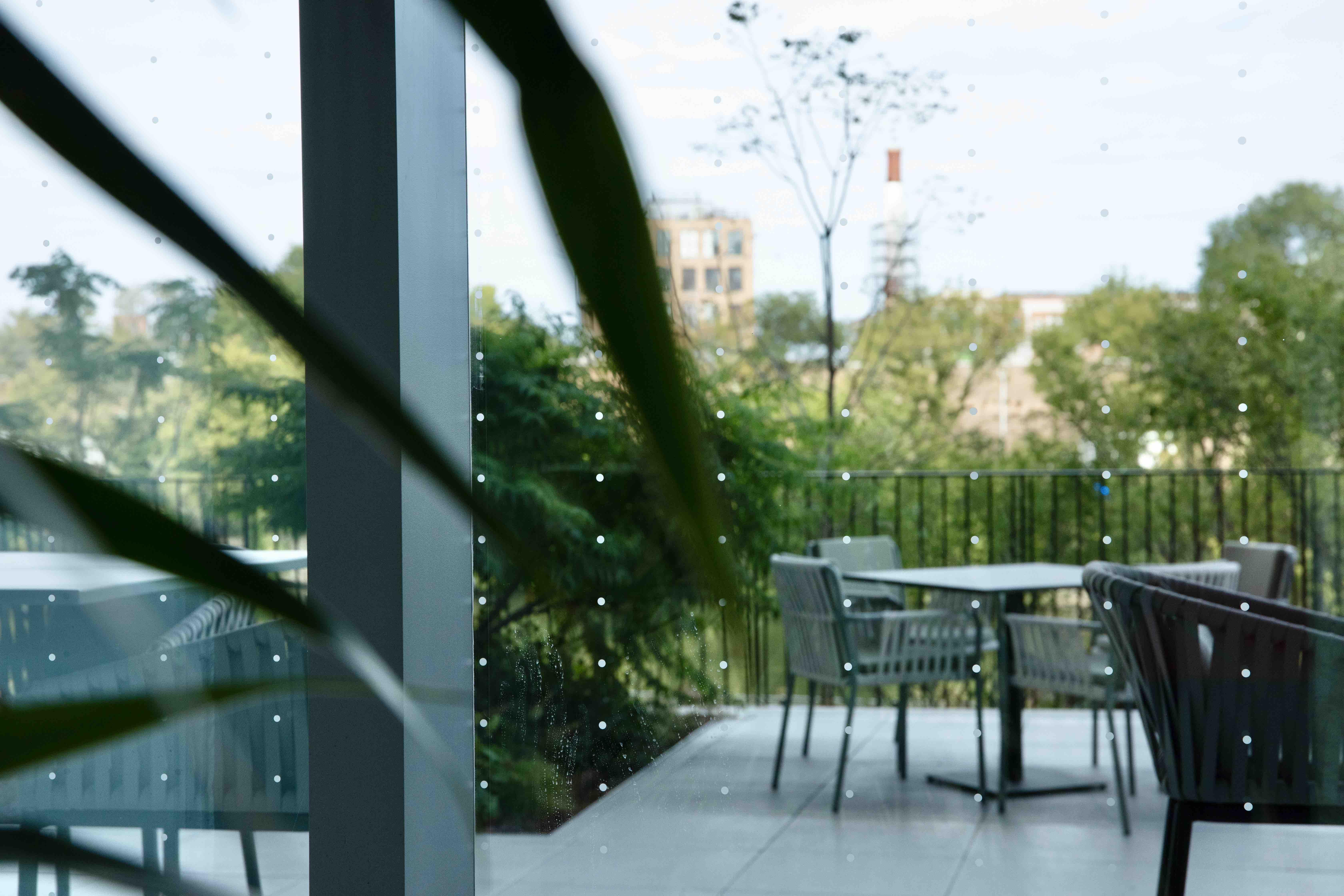 Lincoln Yards' 1229 West Concord building voluntarily incorporated bird-friendly glass, choosing a frit/dot pattern. (Michael Izquierdo / WTTW News)
Lincoln Yards' 1229 West Concord building voluntarily incorporated bird-friendly glass, choosing a frit/dot pattern. (Michael Izquierdo / WTTW News)
NYC Audubon spent decades identifying dangerous buildings in the city and gathering data on collisions. Among the biggest bird killers in the Big Apple: the Javits Convention Center.
A voluntary retrofit by Javits’ leadership proved that facade changes could turn a high-risk building into one that poses little to no risk to birds, with collision deaths dropping 90%. An eight-acre green roof was later added and is used as habitat by 65 bird species. “The Javits has gone from a bird killer to a biodiversity hub,” Partridge said, noting that the center now uses its sustainability as a selling point.
The Javits example stands in stark contrast to McCormick Place, he said.
“That news, when that broke, was cutting,” Partridge said of the October 2023 carnage. “That cut across bird communities probably throughout the world. To see a mass death like that, of just the sheer number of birds that were found — and that doesn’t even account for the birds that were temporarily stunned and flew off and later died — this is a massive impact.”
Having come under global scrutiny, the Metropolitan Pier and Exposition Authority responded by issuing requests for proposals for window film and window coverings, with decisions on both due later this spring, according to a spokesperson.
Partridge advised his counterparts in Chicago to continue focusing attention on and documenting collisions. “It’s really powerful having that data,” particularly given that it’s difficult for most people to grasp the scope of the issue “unless you have an event like what happened with McCormick Place,” he said.
“The thing that happens, though, is that once people start to notice it and understand the scale, you really can’t unsee it,” Partridge continued. “You can walk around the city, and you can find birds that are dead or dying.”
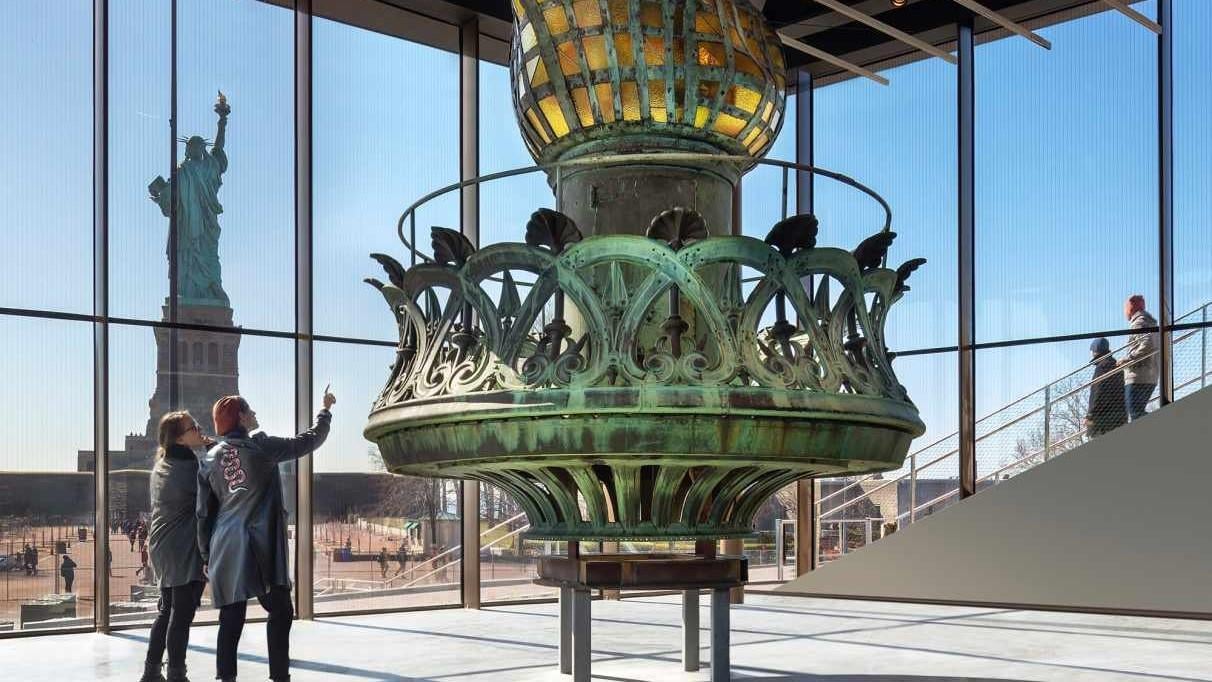 Bird-safe glass was used in the Statue of Liberty Museum in New York City. (Courtesy of FXCollaborative)
Bird-safe glass was used in the Statue of Liberty Museum in New York City. (Courtesy of FXCollaborative)
Pushback against bird-friendly building design legislation typically centers around arguments that bird-safe glass is too expensive, regulations will stifle development and consumers will find the glass too intrusive.
With the first buildings permitted under New York’s new law just beginning to come online, the jury is still out on some of those concerns, but others have soundly been put to rest.
“Nobody’s stopped developing buildings in New York because of that law, that’s for sure,” said Daniel Piselli, director of sustainability and principal at the New York-based architecture firm FXCollaborative. “It’s being treated by the developer community as just another code requirement. Like, every few years, the energy code gets more strict.”
FXCollaborative has four buildings currently under construction subject to the new law, each of which takes a slightly different approach to meeting the bird-safe requirements for glass. The options most commonly used, Piselli said, are either ultraviolet coatings or frit (a pattern, usually dots), both of which serve the same function of providing birds with a visual clue that an obstruction is present.
There is, admittedly, an upcharge to these solutions — versus non-bird-friendly glass — but the bonus of New York City’s law is that it forced the marketplace to scale up.
“Specifically, because it’s New York City’s law, all the glass manufacturers that service New York had to get on board and get knowledgeable about it,” Piselli said. “It truly did cause the manufacturers and fabricators of glass products to bring more products to market. There’s just more products on the market now than there were, and there’s more places to buy them from.”
The big question mark is consumer reaction: How much view are people willing to sacrifice to protect birds?
The answer to that is likely to vary person by person, from one situation to the next, Piselli said.
Consider, he said, the Statue of Liberty Museum, an FXCollaborative project that opened in 2019. The bird-friendly elements include a green roof, meadow-like landscaping and bird-safe glass designed with a custom frit/dot pattern.
“After it opened, I would go there and I would ask people, ‘Hey, what do you think about these dots?’ And they were like, ‘Oh yeah, there’s dots there. OK.’ Nobody cared,” said Piselli. “The building’s won all kinds of awards, everybody’s happy.”
What people accept in an institutional setting, though, isn’t necessarily what they’ll tolerate in their home, he noted.
Real estate agents in New York are fond of touting floor-to-ceiling windows as a selling point, ironically, Piselli said, marketing a clear view as a way to connect with nature.
“We’re trying to connect with nature but then literally killing it while we’re doing it,” Piselli said.
Yet, as he looked out his own New York apartment window, Piselli wondered whether the importance of a “clear view” wasn’t being greatly exaggerated.
“Across the way, everybody has their blinds pulled. So maybe people aren’t going to care at all,” he said. Maybe patterned glass will become the new normal, “just kind of the way it is, and it’s not a big deal.”
Not a big deal to people, but a very big deal to the billions of birds killed annually in collisions with glass, collisions that are, with the help of dots, lines or patterns on glass, largely preventable.
“It’s not like we have to invent fusion energy production to make this right,” Piselli said. “I never thought that (New York City) law was ever going to be passed; I was blown away that it happened. That makes me think other big things can happen, too.”
As birds continue to die in Chicago, Bird Friendly Chicago has vowed to continue fighting for mandatory bird-safe building design.
“We will not stop demanding better,” the group said.
Contact Patty Wetli: @pattywetli | (773) 509-5623 | [email protected]

